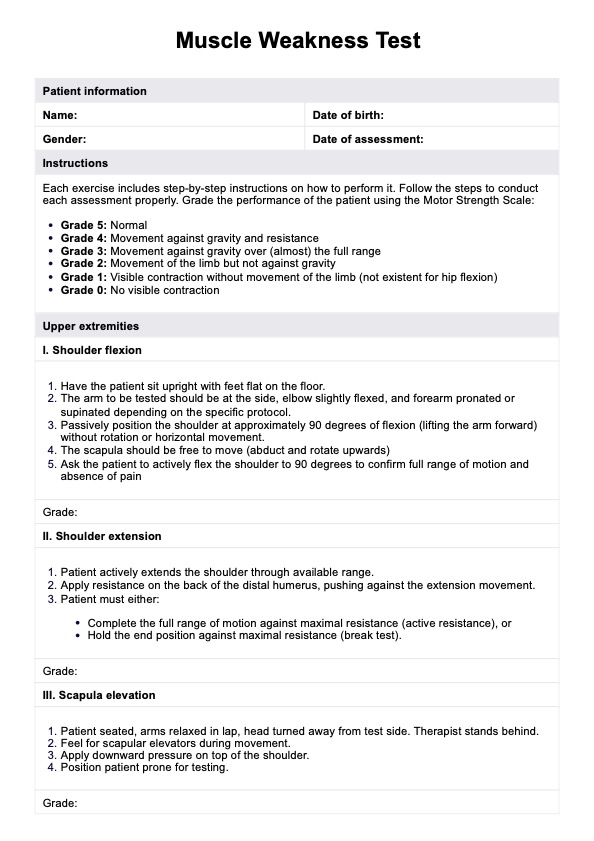Muscle fatigue can be tested by assessing the ability to maintain force or power output during repetitive contractions. This can be done through exercises like repeated squats or lifting weights until exhaustion.

Test for Muscle Weakness
Learn how to determine muscle weakness with Carepatron's free PDF download and example. This resource provides valuable information on assessing muscle strength and functionality.
Use Template
Test for Muscle Weakness Template
Commonly asked questions
You can test muscle weakness at home by performing simple strength tests, such as trying to lift objects of different weights or doing exercises like push-ups or leg lifts to assess strength and endurance.
Signs of muscle weakness include difficulty lifting objects, walking, climbing stairs, performing routine tasks, and noticeable changes in muscle size or tone.
EHR and practice management software
Get started for free
*No credit card required
Free
$0/usd
Unlimited clients
Telehealth
1GB of storage
Client portal text
Automated billing and online payments











